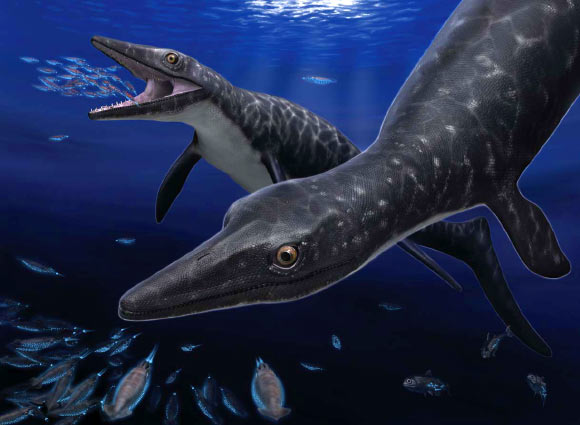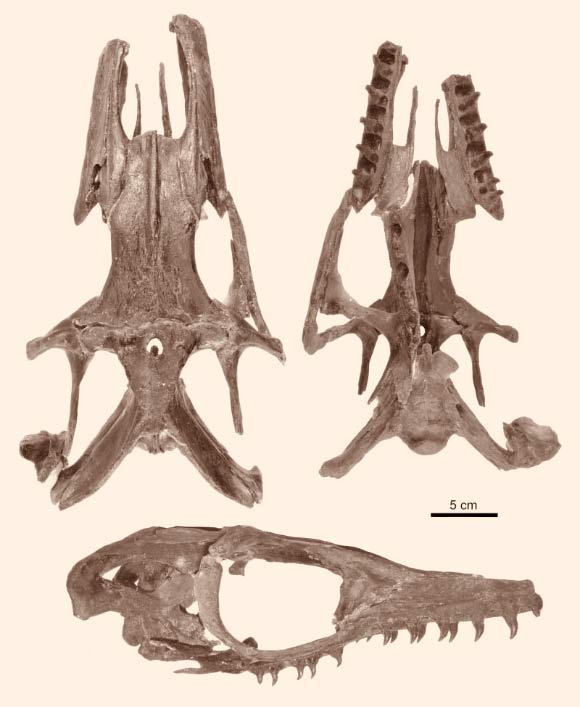Paleontologists have discovered what they say is a completely unexpected new mosasaur that lived 72 million years ago in Japan.

Life restoration of Phosphorosaurus ponpetelegans, with a pair ambushing coleoid cephalopods at night. Image credit: Tatsuya Shinmura / Ashoro Museum of Paleontology / Trustees of the Natural History Museum, London.
The newly discovered mosasaur, named Phosphorosaurus ponpetelegans, comes from a creek in the town of Mukawa in northern Japan.
“Previous discoveries of Phosphorosaurus mosasaurs have occurred along the East Coast of North America, the Pacific Coast of North America, Europe and North Africa, but this is the first to fill the gap between the Middle East and the Eastern Pacific,” said Dr Takuya Konishi of the University of Cincinnati.
Measuring about 10 feet (3 m) long, this marine reptile lived during the Late Cretaceous period just before the last of the dinosaurs such as T.rex and Triceratops, said Dr Konishi. He was the lead author of a report published this week on Phosphorosaurus ponpetelegans in the Journal of Systematic Palaeontology.
The paleontologists determined that this small mosasaur had binocular vision – its eyes were on the front of the face, providing depth perception.
“The long and laterally projecting jugal processes, when combined with a depressed as well as narrow snout, provide compelling evidence for well-developed binocular vision for the new mosasaur, with BFoV (an estimated binocular field of view) of 35 degrees,” they said.
“The forward-facing eyes on Phosphorosaurus ponpetelegans provide depth perception to vision, and it’s common in birds of prey and other predatory mammals that dwell among us today,” Dr Konishi added.
The team believes Phosphorosaurus ponpetelegans (a phosphorus lizard from an elegant creek) hunted at night, much like the owl does compared with the daytime birds of prey such as eagles.
“The binocular vision in nocturnal animals doubles the number of photoreceptors to detect light. And, much like owls with their very large eyes to power those light receptors, the smaller mosasaur revealed very large eye sockets.”
Also, because fossils of lantern fish and squid-like animals have been found from the Late Cretaceous of northern Japan, and because their modern counterparts are bioluminescent, Dr Konishi and his colleagues believe that Phosphorosaurus ponpetelegans may have specifically targeted those glowing fish and squids at night while their larger underwater cousins hunted in daytime.
“If this new mosasaur was a sit-and-wait hunter in the darkness of the sea and able to detect the light of these other animals, that would have been the perfect niche to coexist with the more established mosasaurs,” Dr Konishi said.
_____
Takuya Konishi et al. A new halisaurine mosasaur (Squamata: Halisaurinae) from Japan: the first record in the western Pacific realm and the first documented insights into binocular vision in mosasaurs. Journal of Systematic Palaeontology, published online December 07, 2015; doi: 10.1080/14772019.2015.1113447








